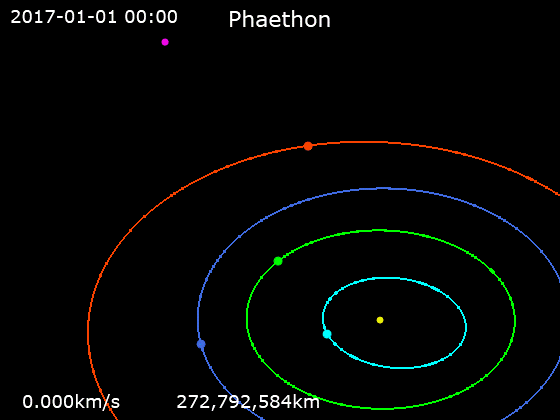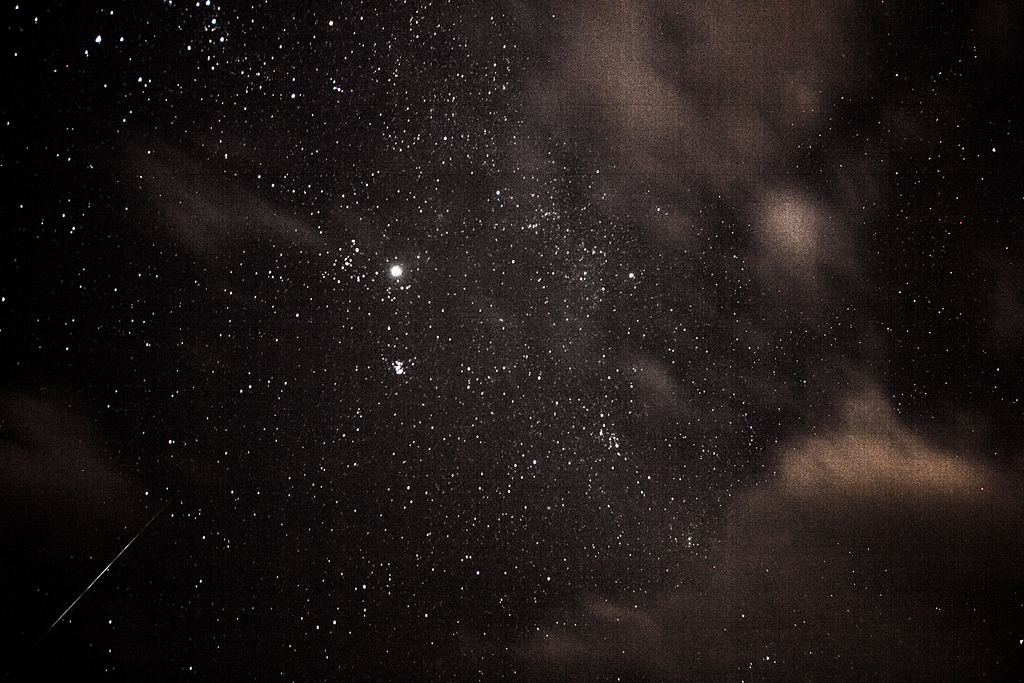
Though we are treated to several meteor showers throughout the year, most pale in comparision to the grand finale – the Geminids. Expected to be at their peak on Thursday and Friday night (Dec. 13-14, 2018), the dependable meteors rank high in both quantity and quality. Nicknamed the “900-pound gorilla of meteor showers” by NASA, they outweigh other dust streams by factors of between 5 to 500!
The shooting stars are also easier to spot because they streak through the skies at a noticeably slower pace, encountering Earth at about 22 miles (35 kilometers) per second, or about half the speed of the Perseids meteors’ 37 miles (60 kilometers) per second.
Named after the constellation Gemini, from which they appear to radiate, the Geminids are also unique in another aspect. Most meteor showers are the result of our planet passing through comet debris that burns upon contact with Earth’s atmosphere. The Geminids, however, is the result of particles left behind by 3200 Phaethon, an Earth-crossing asteroid, as it orbits around the sun.

The 3200 Phaethon, which demonstrates characteristics of both comets and asteroids, orbits the sun every 1.4 years and comes so close to the star that its surface gets heated to about 1500°F (800°C). This causes it to shed rocky debris the size of sand grains or peas. Over the centuries, the tiny flecks of Phaethon have formed a “river of rubble” along the asteroid’s orbit. As Earth traverses through the area every year in mid-December, the particles collide with our planet’s outer atmosphere and burn, transforming into gorgeous “shooting stars.”
While the Geminids will be streaking across the skies throughout the day, they can be best viewed after 11:00 p.m. local time on Thursday, December 13, and about an hour later on Friday, December 14, when the skies are dark and moonless. However, the optimal time to see the show will be around 2:00 a.m. when the constellation Gemini is the highest in the sky. Though the Geminids favor the Northern Hemisphere, the meteors will be visible from the Southern Hemisphere as well.

For those planning to brave the freezing winter mornings to watch this year’s final celestial show, here are some tips from experts: bundle up, pack some hot cocoa, get as far away as possible from city lights, and, most important of all, be patient. That’s because the shooting stars do not come at regular intervals. Instead, they tend to zip across the skies in clumps about every five to seven minutes.
Happy viewing!
Resources: Space.com,skyandtelescope.com,accuweather.com,science.nasa.gov
